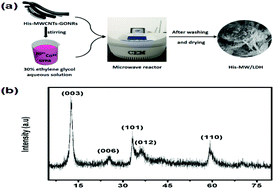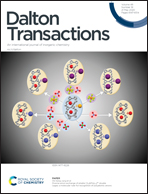A high-performance histidine-functionalized MWCNT-GONR/Co–Ni LDH flower cluster structural composite via a microwave synthesis for supercapacitors†
Abstract
A flower cluster structural histidine-functionalized multi-walled carbon nanotube-graphene oxide nanoribbon/Co–Ni LDH (His-MW/LDH) composite was synthesized via the microwave method. In this study, we used His-MW as a carbon material to synthesize the electrode because it not only has the properties of MWCNT-GONR (MW) but also completes the N doping process due to the addition of histidine. His-MW adhered to the LDH flower cluster, and the radius of the composite was found to be nearly 1 μm. The synergistic effects of His-MW and LDH could effectively increase the specific surface areas and conductivity of the composite, thereby endowing it with high specific capacitance (1674 F g−1) and admirable cycling stability (83.33% capacitance retention). Moreover, we assembled an asymmetric supercapacitor, and it possessed 39.47 W h kg−1 at 0.80 kW kg−1 as well as prominent cycling stability (93.81% capacitance retention). This study proves the feasibility of synthesizing the histidine-functionalized carbon derivative/LDH composite by the microwave method. Moreover, we are optimistic that the electrode material can be extensively used in supercapacitors because of its splendid electrochemical properties and facile synthesis.



 Please wait while we load your content...
Please wait while we load your content...